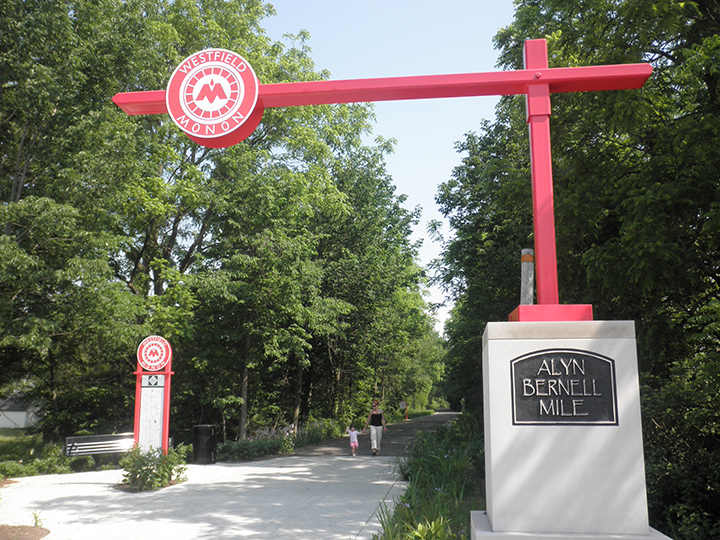Commentary by Zach Burton
We now ride bikes and jog on the ghost of the Monon route, but what Hoosier history once traveled over these tracks?
Established in 1847 as the New Albany and Salem Line, the route grew and merged into the larger Chicago, Indianapolis and Louisville Line before finally becoming known as the Monon due to the convergence of its X-shaped tracks in the town of Monon. Throughout its history, the Monon was affectionately referred to as the “Hoosier Line,” as its roughly 500 miles of track largely stayed within the state.
Along its route, the Monon had stops that served six colleges, including St. Joseph’s College (Rensselaer), Purdue (Lafayette), Wabash College (Crawfordsville), DePauw (Greencastle), Butler (Indianapolis) and Indiana University (Bloomington). Indeed, the Monon’s color scheme reflected Indiana’s two major universities, with freight cars being painted black and gold for Purdue University and passenger cars painted red and white for Indiana University. The Monon Bell trophy, which goes to the victor of the annual Wabash-DePauw football game, is in fact a 300-pound Monon locomotive bell that was first presented in 1932.
The tracks between Lafayette and Michigan City were part of 20 rail lines that brought the body of Abraham Lincoln home to Illinois. The Monon was the scene of a train robbery, which occurred between Harrodsburg and Smithville in 1885. The Monon even had a “close encounter of the third kind” in 1958 when the crew on a Monon freight train reported four softly lit discs had stalked the train as it traveled between Owasco to Kirklin.
The Monon fell into bankruptcy during the Great Depression, but traffic flourished after John Barriger III took over the company in 1946. Due to the decline in rail travel beginning in the 1950s, the Monon officially ended passenger travel Sept. 30, 1967. The remaining freight line became the Louisville and Nashville Railroad in 1971.
In a brief history of the Monon, published in the Chicago Tribune on the line’s last day of passenger service, when the final car pulled in to Chicago at 2 p.m. there was “no band to greet it as there had been 120 years earlier in New Albany.”
“The end of an era is a quiet thing,” the Tribune noted.



